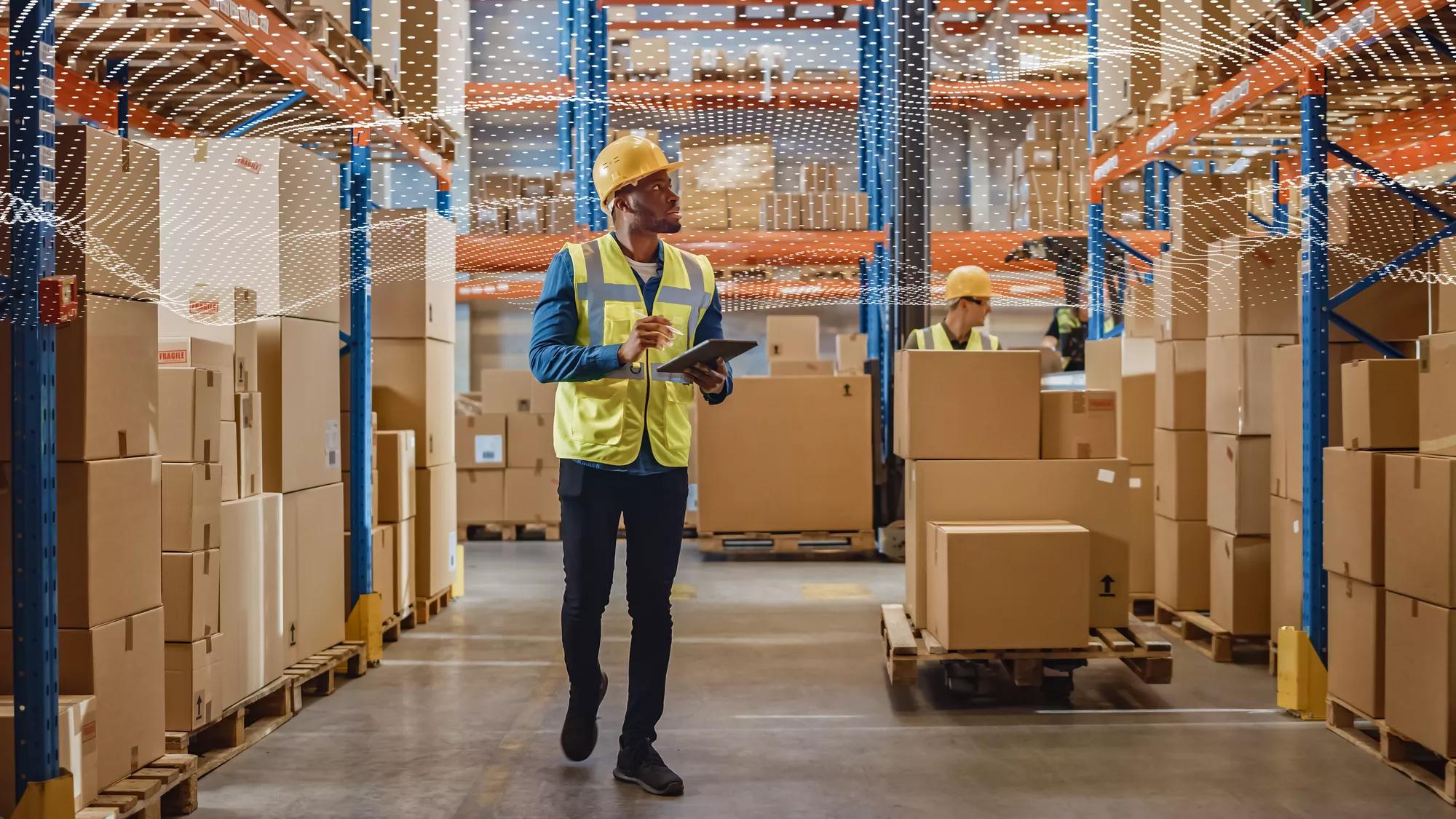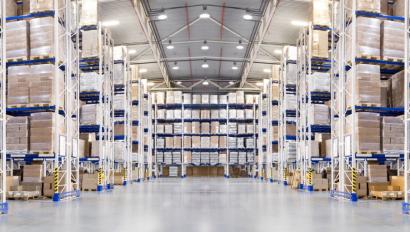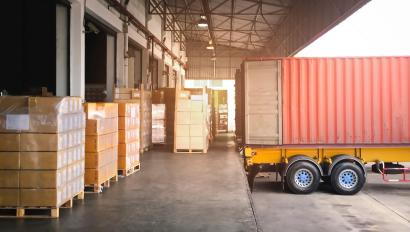The 5-Layered Approach for Keeping Warehouses Secure

The Rise of Online Shopping
During the height of COVID-19, many areas of life were on pause. But one area that not only remained steadfast but experienced significant growth was e-commerce, with global retail sales growing more than 25% in 2020.[1] Even as the world slowly returns to normal, the popularity of online shopping remains and continues to grow. In fact, it will account for 22% of global retail sales by 2023.[2]
The Supply Chain Crisis
With more consumers purchasing online than ever before, retailers are pressured to meet the increased demand. This has led to them stocking more goods in the hopes of getting orders to consumers and making a profit during this unprecedented economic downturn. But the broken supply chain creates an obstacle that's hard for retailers to get around. The transport and logistics industry is dealing with worker shortages, from truck drivers to dock workers. With fewer workers to unload the shipping containers and move freight, ports are becoming overwhelmed, leading to a bottleneck of goods unable to be shipped out and leaving warehouses filled to capacity.[3]
This inventory excess puts the transport and logistics industry in a precarious position: with a higher volume of goods to account for, keeping them safe becomes more challenging.
Present Challenges with Warehouse Security
Many warehouses operate around the clock due to consumers expecting their packages faster than ever. Although more convenient and efficient, this creates security challenges. With warehouses open 24/7, assets are under constant threat of being stolen or tampered with by unauthorized trespassers. These trespassers can show up to a site, appear legitimate, head to a loading dock, pick up a pallet of goods and drive away.
A common solution would be to have an alarm system to detract possible intruders, but the current warehouse operating hours make implementing one difficult. Unlike traditional businesses that turn on their alarm systems once everyone has gone home for the day, warehouses cannot utilize alarms because that would disrupt the flow of work, making it difficult for workers to do their job.
The security that the transport and logistics industry deploys for warehouses needs to be low while people are working and effective enough to safeguard goods, especially now with increased inventory. Here are five approaches for keeping goods in warehouses secure:
Maintain Perimeter Protection
Protecting the external area of a warehouse is just as crucial as protecting internal areas. Unwanted visitors shouldn't be able to come onto the premises easily. Implementing perimeter protective measures like fences and gates is the first line of defense for deterring these threats from occurring.
Two questions should be asked to determine the effectiveness of fences and gates: are they free from damage, and do they provide adequate resistance to anyone getting over, under or through them? This means doing frequent inspections of the barriers and their surrounding areas to find blind spots. That way, intruders have one less entry point.
Implement CCTV with Monitoring and Audio Talk Down
A CCTV system is the most effective way to help protect assets while workers are onsite and walking in protected areas containing high-value assets. But its performance is elevated with the inclusion of monitoring and audio talk down. The implemented CCTV system should enable designated users to remotely manage, monitor what's going on and issue a warning message to intruders.
The combination of monitoring and audio talk down allows users to patrol and defend a site without stepping foot on it. The CCTV system can detect motion and then send a pre-recorded or live warning to trespassers. Because this is done remotely, it's much safer to confront possible intruders than face-to-face confrontation.
Another option is using a monitored security service to monitor warehouses remotely. This service gives around-the-clock, 360-degree visibility into onsite operations and utilizes a professional team that spots potential threats, reduces risks and increases onsite efficiencies that may not be apparent to working personnel.
Integrate Access Control
Controlling who has access in a warehouse effectively pinpoints who's allowed in secure areas and who isn't. Integrating access control starts with establishing non-protected and protected areas. Non-protected areas are places that anyone should be able to access, such as a reception desk. Protected areas contain sensitive information or high-value assets that only authorized personnel can access.
Once areas are established, the type of access control used should be determined, depending on a warehouse's needs. Types can include pin codes, which are assigned to a specific user and serve as their credential to access a space; key fob or card, which grants holders access to secure areas; and mobile, which stores access credentials on a user's mobile device.
Incorporate Data from Internet of Things Sensors and Artificial Intelligence Analytics
With more inventory than ever and more coming in, it can be challenging to keep track of it all. Incorporating the data from artificial intelligence (AI) analytics and Internet of Things (IoT) sensors — tools that should already be in place in existing security — into warehouse operations can help get a real-time view of the location and condition of goods and assets.
The combination of IoT and AI provides a big-picture view of the supply chain, helping to identify emerging patterns and anticipate disruption. This allows stakeholders to foresee potential disruptions and make changes where needed before the disruptions happen, helping to optimize operations and ensure safe delivery of assets.
Install a Time and Attendance System
An essential part of determining authorized warehouse personnel is installing a time and attendance system. These systems use electronic readers that work in conjunction with access controls, such as card or mobile, to register employees' arrival, break and leave times. Because it keeps track of onsite employees, intruders who don't possess these credentials will quickly be discovered.
Effective warehouse security is vital amidst the growth of online shopping and the ongoing supply chain crisis. The increase in goods means the transport and logistics industry needs to ensure security measures keep these goods safe. Security technology and protective measures — like perimeter protection, CCTV with monitoring, access control, IoT, AI, time and attendance systems, etc. — are enabling organizations to unlock the value of asset-based data, helping them to take a more predictive and proactive approach to security, and supporting their long-term strategic goals. By adopting the 5-layered approach, companies can be more comfortable in the security of their inventory.
Get in touch with us today to discover how we can help with securing your warehouses.
We’re Here to Help
Let us help you navigate the decisions for helping ensure a healthy, safe, and secure environment for your employees and visitors. Contact a security expert today for a free consultation.
Disclaimer: By using the Blog section of this website (“Blog”), you agree to the terms of this Disclaimer, including but not limited to the terms of use and our privacy policy. The information provided on this Blog is for informational purposes only. Such information is not intended to provide advice on your specific security needs nor to provide legal advice. If you would like to speak to a Securitas Technology representative about your specific security needs, please contact us.























